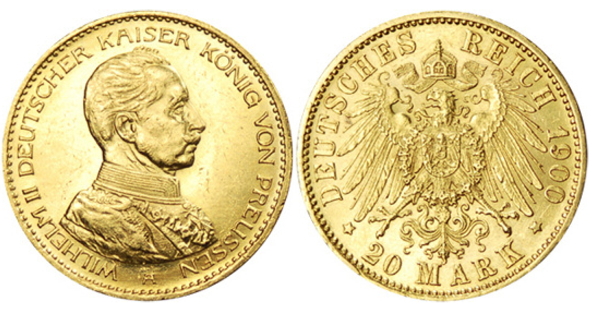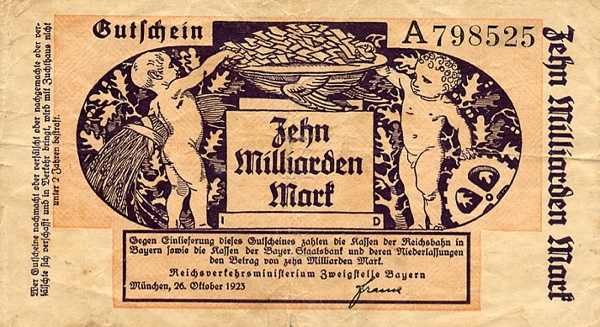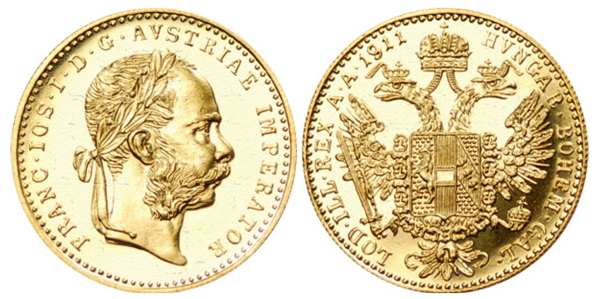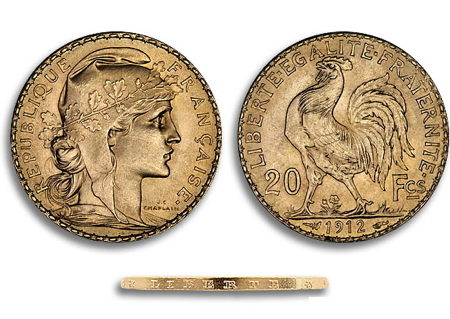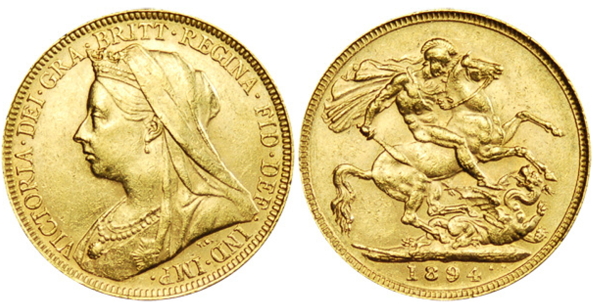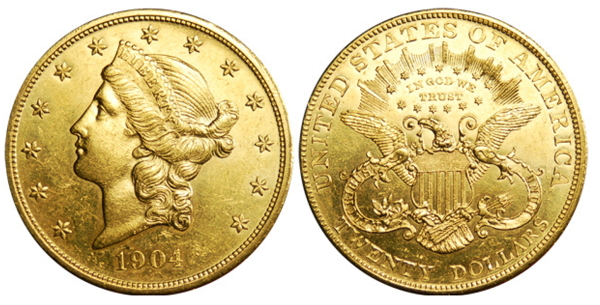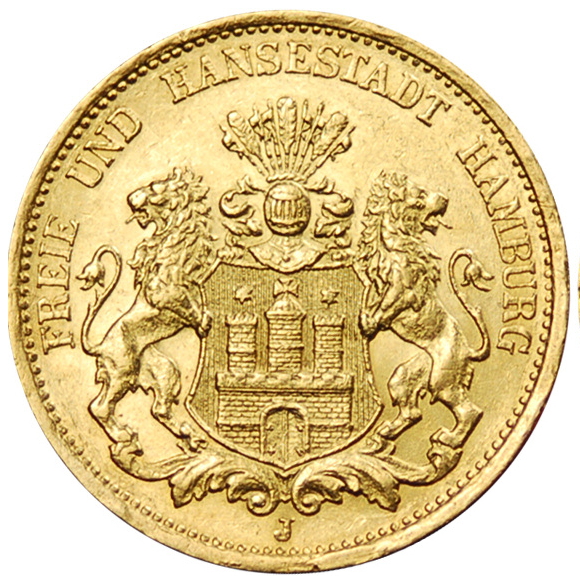The Gold Standard vs. Fiat Paper Money
|
|
|
Top: a 20 Mark Gold Coin - Deutsches Reich, Wilhelm II German Emperor and King of Prussia (1900)
Bottom: a 10 Billion Mark German banknote (October 1923) |
|
As the Austrian economist Ludwig von Mises (1881-1973) noted, during the 19th century all the major European powers developed currencies based upon the gold standard (such as this German Imperial 20 Mark coin issued in 1900, above). This policy was strongly supported by classical liberals as it provided a powerful means by which the power of government to debase or otherwise manipulate their currencies was severely restricted. During and immediately after the First World War (1914-1918) the connection between a nation's currency and gold became much looser, or even non-existent as in the case of the hyper-inflation which gripped Germany during the Weimar Republic (1922-23). The bottom image is of a 10 billion mark Mark banknote dated 26 October 1923 at the peak (or depth) of the hyperinflation when paper money had become all but worthless. Mises wrote a number of important essays on monetary and banking policy in the mid and late 1920s in which he denounced this move away from the gold standard and predicted that it would lead to severe economic dislocation, the political manipulation of currencies, and even the collapse of the monetary system. [See Mises, On the Manipulation of Money and Credit (2011).] Related Links:
|
The following images show the range of gold coins which were used by the Great Powers of Europe before the classical liberal world order was destroyed by the First World War, including most importantly sound gold-based money. They have been taken from a booklet by Michael J. Kosares, Investing in Pre-1933 Gold Coins: Security, Privacy and Opportunity in a Time of Economic Uncertainty (Denver, CO., 2010). <http://www.usagold.com/publications/pre-1933_gold_coins.pdf>. It should also be noted that many other countries issued gold coins during this period, including from Europe - Belgium, Denmark, Hungary, the Netherlands, Russia, Italy, Sweden, Switzerland; and elsewhere, the Empire of Japan, the Ottoman Empire, Argentina, Colombia, Mexico, Uruguay, and the United States.
|
|
|
Austrian 1 Ducat Gold Coin (1911)
[Minted 1872-1914. This coin from 1911 shows Emperor Franz Joseph, the Emperor of Austria] |
|
|
|
A French 20 Franc Gold Coin (1899)
[The coin is called "the Rooster" and was minted 1906-1914. It shows the head of "Liberty" and the Rooster and motto of the French Republic - "Liberty, Equality, Fraternity"] |
|
|
|
A French 20 Franc Gold Coin (1912)
[This view of "the Rooster" from 1912 shows the word "Liberté" which is printed around the rim of the coin] |
|
|
|
A German 20 Mark Gold Coin (1900)
[The coin shows Wilhelm II German Emperor and King of Prussia and the German Eagle] |
|
|
|
A British Gold Sovereign (1894) |
|
|
|
The Liberty $20 Gold Coin (1904)
[The coin shows the head of Liberty surrounded by 13 stars representing the original 13 colonies which revolted from the British Empire] |
|
|
|
A Gold Coin issued by the Free and Hanseatic City of Hamburg (no date)
[Although the German Empire (1871-1918) issued gold currency for the entire Empire, the independent cities of Lubeck, Bremen, and Hamburg also issued their own currencies with the coat of arms of the city on one side] |
